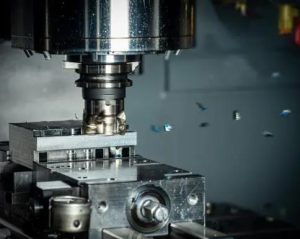Casting Aluminum: What’s the Process?
Casting aluminum is a widely used manufacturing process for producing intricate parts and components with complex geometries. Let’s delve into the details of the casting aluminum process, exploring its various stages and characteristics.

Understanding the Casting Process
Molten Metal Preparation
The casting process begins with the preparation of molten aluminum. Aluminum ingots or scrap metal are melted in a furnace at temperatures exceeding 660°C (1220°F). The molten metal is then transferred to a crucible or ladle for further processing.
Mold Preparation
Next, a mold is prepared for casting the aluminum. Depending on the complexity of the part, the mold can be made from various materials such as sand, plaster, ceramic, or metal. The mold is designed to replicate the desired shape of the final part.
Types of Casting Methods
Sand Casting
Sand casting is one of the most common methods used for casting aluminum parts. In this process, a pattern of the desired part is pressed into sand to create a cavity. Molten aluminum is poured into the cavity, and once solidified, the casting is removed from the mold.
Die Casting
Die casting involves injecting molten aluminum into a steel mold under high pressure. This method is suitable for producing parts with intricate details and high dimensional accuracy. Die casting is often used for mass production of aluminum components such as automotive parts and consumer electronics.
Advantages of Casting Aluminum
Cost-Effectiveness
Casting aluminum offers cost advantages, especially for large-scale production runs. The relatively low tooling costs and high production rates make it an economically viable option for manufacturing complex parts in bulk.
Design Flexibility
The casting process allows for the production of parts with intricate shapes and intricate details that would be challenging or impossible to achieve through other manufacturing methods. This design flexibility enables engineers to create innovative and complex components for various applications.
Applications of Cast Aluminum Parts
Automotive Industry
Cast aluminum parts are extensively used in the automotive industry for engine components, transmission housings, wheels, and structural components. The lightweight nature of aluminum provides fuel efficiency benefits while maintaining strength and durability.
Aerospace Applications
In the aerospace sector, casting aluminum is employed in the production of aircraft components, including fuselage structures, engine parts, and aerospace alloys. The high strength-to-weight ratio of aluminum makes it an ideal choice for aerospace applications where weight savings are critical.
Conclusion
Casting aluminum is a versatile manufacturing process that offers numerous advantages, including cost-effectiveness, design flexibility, and suitability for a wide range of applications. By understanding the intricacies of the casting process and its applications, manufacturers can leverage the benefits of aluminum casting to produce high-quality, intricate components for various industries.
For more information on casting aluminum and precision manufacturing services, visit casting aluminum.